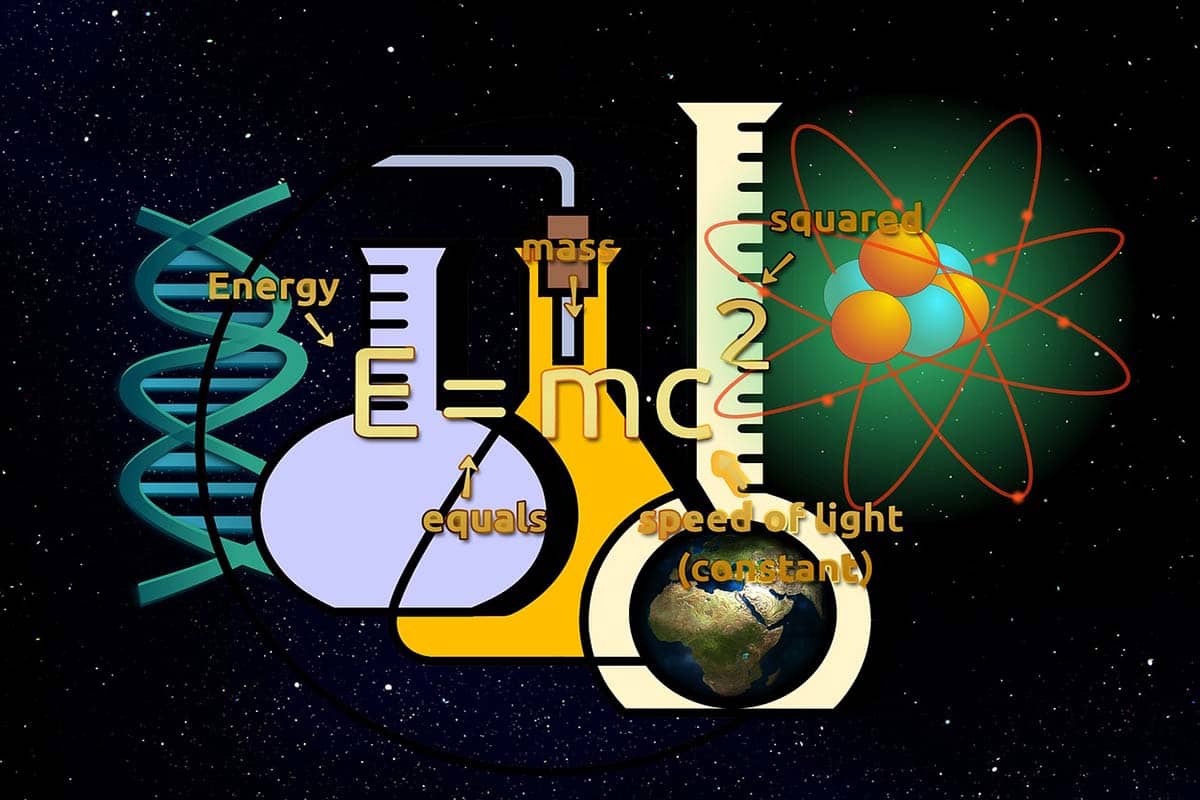The concept of physical sciences is founded upon the study of the inorganic world as against the study of the organic world which is a core focus of the biological sciences. The physical sciences are generally composed of four distinct areas namely the earth sciences, astronomy, chemistry, and physics. Each of them is further subdivided into the smaller field. In this article we will try to unravel a few mysteries, chief among which is the question; is physical science the same as physics.
Is physical science the same as physics?
Physics is a kind of science. Even though the real boundaries of a type of science are not known, physics is often regarded as the science of the way things move or simply put; the science of energy. Physics deals mostly with the physical universe without including some chemistry, geology, and astronomy. These three sciences and some other ones should be easy to understand if you comprehend the concepts upon which physics is built. Practically speaking, these sciences are separated mainly because of the complexities which are known as emergent phenomena. These are simply things of an extra degree of complexity.
For instance, the foundation of chemical reactions is traceable to the quantum electrodynamics. This is a branch of physics. However, some chemical reactions may not be easy to explain using the first principles of QED. There was once a time when sciences such as Biology, chemistry and the other branches of the physical sciences had defined boundaries. But these days, there are several overlaps and physics does not seem separate from the other physical sciences.
The Chain Of Connections In The Physical Sciences
Modern-day physics was created in the middle of the 19tth century as a product of the different older sciences. These included those of the optics, mechanics, electricity, acoustics, heat, magnetism and those bothering on the physical properties of matter. This synthesis was largely based upon the recognition which the different forces of nature are connected.
The boundary which exists between chemistry and physics which are branches of physical science is one that can best be described as arbitrary. With its evolution in the twentieth century, physics deals mainly with the behavior and structure of atoms as well as their components.
Chemistry, on the other hand, deals with the reactions and properties of molecules. Molecules depend on energy particularly heat and atoms. Thus, there is a strong connection between chemistry and physics. Chemists appear to be more interested in certain properties of hitherto different compounds and elements. Physicists on the other hand deal with the general properties that are shared by matter.
Astronomy, on the other hand, is the science that deals with the study of the solar system or beyond the earth. It composes of the earth’s physical properties which include its rotation and mass. This is as long as they interact with other bodies that exist within the solar system.
Until the turn of the eighteenth century, astronomers were particularly concerned with the moon, sun, comets and the planets. However, with the centuries that followed, the study of galaxies, stars, nebulas and the interstellar medium became an increased priority. Celestial mechanics was the very first testing medium for Newton’s laws. They assisted in the establishment of the basis of classical physics.
Astrophysics which is the study of the physical properties of the celestial bodies came up in the 19th century and is connected quite closely with the determination of the chemical composition of the bodies. As in the 20th-century astronomy and physics became more closely linked via cosmological theories. This is especially those that had their basis on the theory of relativity.
What Is Physical Science?
Physical science can be defined as the scientific study of non-living systems. It is also quite broad a discipline because it places great emphasis on natural phenomena such as the earth, atmosphere, and space. It is made up of several fields which have different branches. Each of the branches is what is referred to as physical sciences. The word physical has a way of creating an illogical and unintentional distinction because most branches of the physical sciences also study the branches of chemistry.
If you are looking to train as a physical scientist, you ought to be a person that loves the earth sciences. You should also love the components and processes of the earth.
The Branches Of The Physical Sciences Explained
1. Astronomy
This is the study of the celestial objects as well as the physics, chemistry, and evolution as well as the phenomena that originate from beyond the earth’s atmosphere. This consists of supernovae explosions, gamma-ray bursts, and cosmic microwave background radiation. The objects observed by scientists in astronomy include asteroids, moons, nebulae, planets, and comets.
2. Physics
Physics is simply the study of matter, its motion through space and time as well as other related concepts such as energy and force. It seeks to analyze nature to be able to better understand how the world behaves
3. Chemistry
Chemistry on the other hand simply deals with the study of the composition, structure, properties, and change of matter. It, therefore, suffices to say that chemistry handles topics such as the properties of each atom and the way via which each of them creates chemical bonds during the formation of compounds as well as the interaction of substances via some intermolecular forces that give general properties to matter. Chemistry also deals with how elements interact via chemical and biological phenomena while creating new substances.
4. Earth sciences
This deals with the fields of science that have to do with the earth. Earth science generally deals with the study of how the natural environment works. It also talks about the way it has changed to what it is today. Earth sciences include the study of the hydrosphere, lithosphere, atmosphere, and biosphere.
Some Notable Principles In The Physical Sciences
A principle is simply a rule or law that has to be. It may also be an inevitable consequence of something. An example is the laws that must be observed in nature. The principles of guiding such a system are often comprehended by its users.
The basic principles of physics
Physics is one of the fundamental sciences as a result of the fact that the other natural sciences seem to be subject to the laws of physics such as biology. Based on physics, the physical laws of matter, the fundamental forces of nature and energy all govern the interactions that exist between the physical entities and particles. Some of the basic adventures of physics include the following:
- Quantifying and measuring bodies as well as their motion and dynamics among others. They include Newton’s laws of motion, force, mass, and weight. Others include position, motion, and energy. The theories of gravity, energy conservation, transfer, and conversion. Also, we have the laws of thermodynamics, phases of matter and phase transitions.
The basic theories of astronomy
This is one of the most interesting branches of physical science because, among other things, it deals with the solar system. Its studies include these:
The origin of the universe, the characteristics of the galaxies and stars, a heliocentric solar system, the structure of the planets, solar system, time measurement, earth in the solar system, as well as the interaction of the moon and earth. It is worthy of note that astronomy is not the same as astrology. Astrology is a field that assumes those human affairs and people’s destinies is linked to the arrangement of astronomical objects in space.
The theories of chemistry
As stated earlier, chemistry deals mainly with molecules and atoms as well as its transformation and interactions. For instance, one such is the properties of the chemical bonds that are formed to come up with chemical compounds. Therefore chemistry deals with the study of the involvement of electrons as well as the different forms of energy in photochemical reactions as well as the separation of mixtures.
In physical chemistry, we have the molecular structure, chemical dynamics, reactions kinetics, quantum chemistry, and spectroscopy. In theoretical chemistry, we have molecular modeling, electron configuration, statistical mechanics and molecular dynamics. Inorganic chemistry we have organic compounds, functional groups, organic reactions, and organic synthesis.
The theories of the earth sciences
The studies here include the water cycle as well as the process of transpiration, oceanography, freshwater, soil science, agro-physics, Geophysics, the earth’s tectonic structure. There is also the study of the formation and characteristics of fossils, meteorology, condensation, evaporation, the atmosphere of the earth, speleology.
Take Home
Is physical science the same as physics, we believe that has been well sorted out. The simple reality is that the physical sciences are an ever-evolving field. We have seen how interwoven the branches of the physical sciences like chemistry, biology and the earth sciences are. The forces of nature seem to all work in a way that spells symphony at times.
You May Like These Articles As Well:







